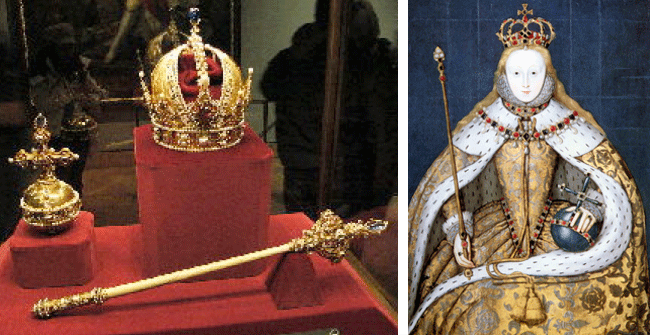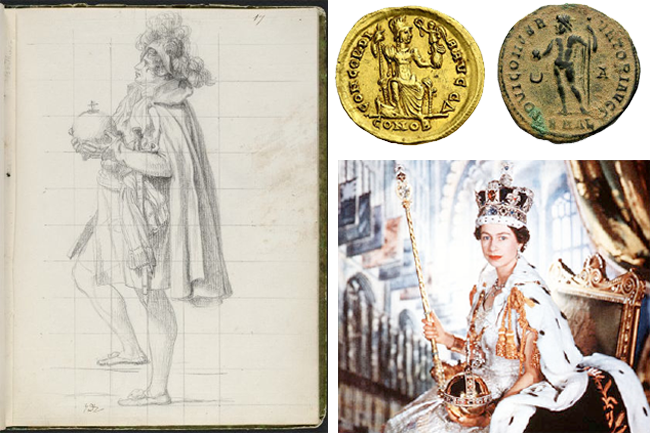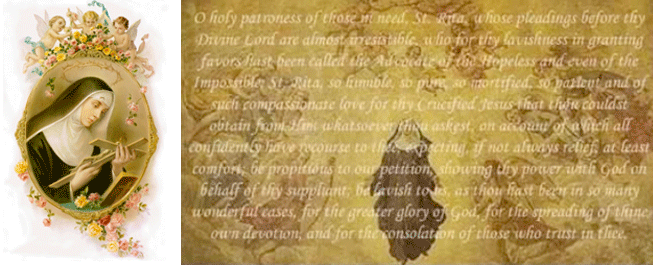The Medieval Cross Collection
The Medieval collection is a reflection and revival of the symbolism surrounding the magnificent golden orbs atop royal scepters and crowns. The orb, which often represented the universe, was topped with a cross during the rise of Christianity. In countless medieval portraits, royalty were depicted holding a royal scepter in one hand and a golden orb in the other. In slightly more ominous portraits, the ruler was depicted with one foot resting on top of the orb to represent the extreme ruling power of the kingdom. While there are endless possibilities of the orb’s exact origins, it has retained its aura of mysterious power and divine protection throughout the tests of time.

The History of the Sacred Orb
While the orbs are most recognized in the medieval era, the origins of the first sacred orbs are thought to be ancient pagan and Celtic rituals, in which orbs were thought to represent the sun and the moon. These two glowing spheres reined over the day and night, and were worshipped as divine entities. Shamans would chant while in the presence of small spheres made of stone or crystal, in hopes that the orbs would empower their prayers.
According to esoteric mysticism, the sacred orbs may represent celestial beings and the guardian spirits of departed souls. The sphere is also considered to be a symbol of the cosmos, or the universe as a whole. In ancient Rome, the plain orb symbolized the universe represented by the god Jupiter. Roman emperors were often depicted holding a globe in hand. During battle in 312BC, emperor Constantine I had a vision of a cross above the sun, with an inscription, “In this sign, shall you conquer.” He ordered his soldiers to draw crosses on their shields, and the battle was won. Constantine defeated all his enemies in this fashion and established himself as a mighty ruler over the vast Roman Empire.

The magnificent golden orbs began appearing on crowns and royal jewelry. Kings demanded to be portrayed with the globus cruciger, believing it would give them divine powers. The image of a ruler holding a scepter and orb began appearing on coins, and soon became an iconic image of royalty in the Western world. Throughout the centuries and despite various interpretations, sacred orbs have retained their aura of mystery and power of divine protection.
The St. Rita Cross

Saint Rita of Cascia, also known as the Saint of Impossible Miracles, was born in 1831 in Roccaporena, Italy. She married a violent man at an early age and endured abuse and suffering for eighteen years. Eventually, a feuding family murdered her husband; shortly after his death, both of her sons died as well. Heartbroken and exhausted by the loss of her sons and many years of pain, she sought refuge in the convent of the Augustinian nuns.
The rose gold cross pendant was inspired by Saint Rita’s life and miracles. It is inlayed with Mother of Pearl, set with pavé diamonds encircling a single emerald, and placed atop the rose gold royal orb. Saint Rita’s prayer is engraved within the orb. The efficacy of her prayers is venerated due to the various miracles attributed to her intercession.




